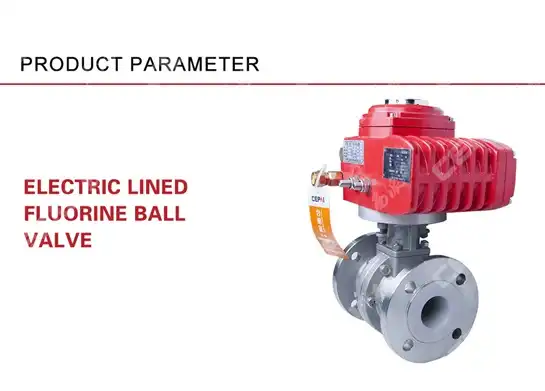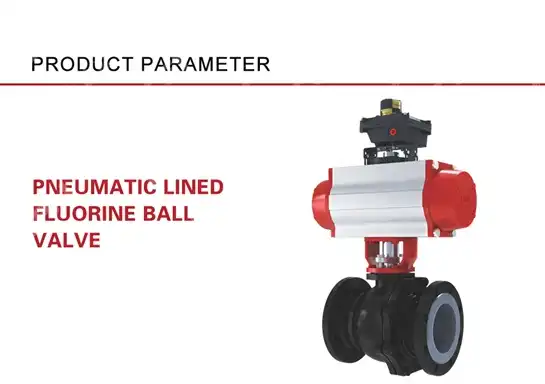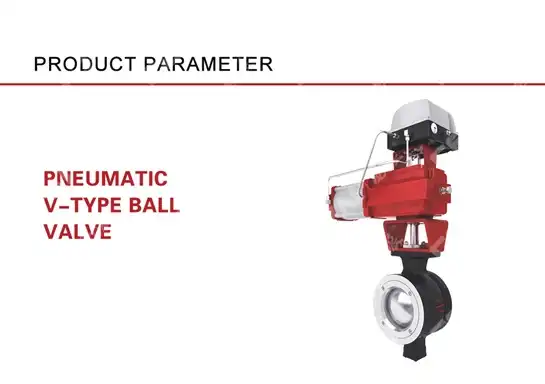What Is an Electric Ball Valve and What are its Key Highlights? An electric ball valve is a motorized valve utilized in liquid administration frameworks to control the stream of fluids or gasses inside a pipeline. Fueled by an actuator, it capacities as an robotized on/off valve with accuracy, empowering farther operation and computerized control. Its key highlights incorporate tall solidness, precise stream balance, energy-efficient mechanization, and consistent integration with mechanical or HVAC frameworks. This article points to investigate the significance, mechanical foundation, center functionalities, and focal points of electric ball valves whereas directing potential clients towards making educated choices.
Understanding Electric Ball Valves: Definition and Core Purpose
Electric ball valves speak to a significant component in today’s mechanized liquid frameworks. On a very basic level, they are motor-driven valves that utilize a round ball interior the valve body to control liquid stream. The ball, prepared with a gap through its center, turns inside the valve lodging, controlled by an actuator associated to an electrical control source. This plan permits the valve to halt or allow liquid stream accurately when required. The ‘electric’ angle alludes basically to the motorized actuator, empowering clients to work the valve remotely or through a computerized control framework, decreasing manual mediation and lifting prepare control efficiency. These valves serve center mechanical and commercial applications where dependable, fast, and exact valve operation is a need. Their arrangement ranges broadly from plumbing and HVAC frameworks to complex mechanical pipelines, where basic liquid administration and weight direction are foremost. As keen valves, they coordinated well into energy-efficient frameworks, encouraging mechanization and real-time monitoring.

The Problem It Solves and the Need It Fulfills
Fluid control has continuously postured challenges due to the requesting prerequisites of exactness, security, and operational comfort in mechanical and mechanical frameworks. Manual valves uncovered framework administrators to wasteful aspects and raised security dangers, especially in unsafe situations or farther areas. Electric ball valves address these issues by conveying mechanized operation that guarantees steady and careful control over liquid movement. Beyond fair robotization, these valves resolve challenges connected to framework downtime by advertising superior unwavering quality and speedier reaction times. Their farther operability is vital for advanced mechanical forms, where checking through shrewd gadgets and computerized stages improves security and work productivity. This robotization too deciphers into made strides vitality effectiveness by optimizing stream control and decreasing wastage. Consequently, the electric ball valve answers the require for more intelligent, more secure, and more versatile prepare control hardware, supporting both complex mechanical frameworks and ordinary HVAC or water supply networks.
Core Features and Functionality: A Detailed Exploration
Delving into the core features, electric ball valves distinguish themselves through several critical components and functionalities:
- Electric Actuator: The heart of the valve’s automation, this actuator drives the ball rotation. It can be a servo motor or stepper motor ensuring rapid and precise open/close actions or modulation for partial flow.
- Ball Valve Design: A hollow sphere with a through-hole, the ball pivots within a seat, allowing full bore flow when open and tight sealing when closed. This design minimizes pressure drop and leakage.
- Digital Control & Remote Operation: Integration with control systems enables remote valve positioning, status monitoring, and automated commands, enhancing process control accuracy and flexibility.
- Flow Control & Modulation: Beyond simple on/off functionality, some electric ball valves facilitate modulated flow adjustments through positioners and feedback sensors, critical for applications requiring fine control of fluid rates.
- Durability and Material Quality: Manufactured to endure harsh industrial environments, these valves use materials like stainless steel and reinforced polymers, ensuring resistance to corrosion, temperature extremes, and mechanical wear.
- Pressure Regulation: Designed to maintain steady pipeline pressure under varying operational conditions, ensuring system safety and performance stability.
- Energy Efficiency and Automation Compatibility: Their ability to function within automated pipelines reduces energy consumption by optimizing valve positioning and avoiding unnecessary flow losses.
Combining these highlights empowers clients to oversee complex pipeline systems, HVAC water frameworks, and mechanical liquid lines certainly. Their high-precision operation underpins rigid prepare control measures whereas streamlining support and operational management.
Technical Insights Behind Electric Ball Valves
At the innovation center, electric ball valves coordinated a few progressed components working in agreement to accomplish consistent automation: The actuator changes over electrical signals into mechanical movement, ordinarily torque, which alters the valve position. This consistent electrical-to-mechanical vitality transformation includes exact engine control innovations, frequently directed by implanted microcontrollers or programmable rationale controllers (PLCs). Valve positioners give input circles, advertising position exactness and tweak capabilities. They guarantee the valve accurately takes after input commands, pivotal for applications requiring liquid stream tuning or maybe than straightforward parallel operation. Electrical associations are planned to comply with industry measures, guaranteeing security and compatibility with mechanization systems. Inaccessible operation conventions frequently incorporate computerized communication benchmarks like Modbus or HART, empowering integration into keen networks and IoT platforms. Additionally, progressed materials and fixing innovations anticipate spills and withstand mechanical stretch, keeping up item life span. The whole get together experiences thorough quality administration frameworks adjusted with ISO benchmarks, guaranteeing unwavering quality and zero-defect execution through rigid review from crude fabric to last item testing.

Key Advantages of Electric Ball Valves
Electric ball valves offer multiple distinct advantages that translate into operational excellence for users:
- Exceptional Durability: Robust construction ensures long-lasting service even under corrosive or high-pressure conditions.
- Precision and Speed: Fast operation combined with accurate modulation allows for fine-tuned flow control and safety.
- Automation Integration: Seamless communication with control systems facilitates efficient process management and remote monitoring capabilities.
- Energy Efficiency: Reduced manual labor and optimized flow control contribute to lower energy consumption.
- Comprehensive Support: The backing of pre-sales technical consultation, customized solutions, and after-sales maintenance guarantees customer confidence and uptime.
- Compliance and Quality Assurance: ISO-certified production and continuous inspections uphold strict quality standards, assuring product reliability and safety.
These benefits illustrate why electric ball valves are favored across industrial sectors, plumbing, HVAC, and water treatment systems, enhancing the automation level and operational safety economically.
Potential Limitations and Considerations
Like all advances, electric ball valves come with caveats that clients ought to consider some time recently usage. Starting venture costs can be higher compared to manual valves due to the included actuator and control components. This might require avocation through illustrated operational investment funds and improved prepare control. The prerequisite for electrical control and network might constrain sending in inaccessible or power-scarce situations. Legitimate electrical security and natural assurance measures must be ensured. Maintenance complexity increments marginally compared to manual valves due to the combination of mechanical and electrical parts. Talented faculty and normal overhauling ended up essential to maintain a strategic distance from startling failures. Compatibility with existing control frameworks and pipeline materials is basic to dodge integration issues. In spite of these contemplations, the long-term benefits ordinarily exceed beginning obstacles, particularly in directed businesses with rigid stream control demands.
Electric Ball Valve in Comparison to Alternatives
Compared to other valve sorts like pneumatic ball valves or manual valves, electric ball valves offer predominant integration with computerized control framework. Pneumatic valves depend on compressed discuss, posturing support challenges and dependence on discuss supply quality. Manual valves need computerization, expanding labor costs and gambling human error. Electric incited valves provide quicker reaction times and higher exactness. Whereas solenoid valves too robotize stream, electric ball valves handle bigger streams with less weight drop and give improved balance capacity. Their strong development bolsters differing mechanical situations way better than more sensitive alternatives. This comparative advantage makes electric ball valves best for businesses centering on framework robotization, prepare control exactness, and unwavering quality beneath requesting conditions.
Target Audience and Typical Use Cases
The ideal users of electric ball valves include industrial plant operators, HVAC engineers, water and wastewater treatment managers, and pipeline system integrators. These users require efficient fluid management tools capable of remote operation, precise modulation, and enhanced durability.
Common use cases span:
- Industrial process control systems where automation and safety are critical
- HVAC installations requiring reliable flow control and energy-efficient management
- Municipal and commercial water systems to regulate pressure and flow remotely
- Oil and gas pipelines demanding tight shutoff and corrosion-resistant materials
- Food and pharmaceutical manufacturing needing sanitary, precise fluid handling solutions
This broad applicability makes electric ball valves an essential component for improving system efficiency, safety, and adaptability.
Conclusion
Electric ball valves marry mechanical reliability with advanced electrical automation, addressing modern challenges in fluid management. Their precise control, durability, and integration capabilities make them indispensable for industries prioritizing automation and safety. With continuous improvements in actuator and digital control technologies, their role is set to expand in future smart fluid systems. Partnering with trusted suppliers like CEPAI Group Co., LTD. ensures access to cutting-edge, quality-assured valves that meet evolving operational demands.
Contact CEPAI Group Co., LTD. for Your Electric Ball Valve Needs
Discover why CEPAI Group Co., LTD. stands as a leading electric ball valve manufacturer and supplier recognized globally. CEPAI offers an exceptional range of durable, high-precision motorized valves designed to meet diverse industry requirements. Our deep investment in R&D, patented technologies, and ISO-certified quality system underline our commitment to excellence.
We provide tailored valve selection consultation, customized solutions, professional installation support, and reliable after-sales maintenance. For complex automation and digital control demands, our valves integrate efficiently with your existing systems, enhancing pipeline and HVAC automation while ensuring energy efficiency and safety.
Reach out today to tap into CEPAI’s expertise and premium electric ball valve solutions. Contact us at cepai@cepai.com to learn more about our products for sale and how we can elevate your fluid management infrastructure with our smart valve technology.
References
1. Industrial Valve Handbook – A Comprehensive Guide to Fluid Control Components
2. Automation and Control in Fluid Management Systems, Journal of Process Engineering
3. ISO 9001 Quality Management Standards for Valve Manufacturing
4. Smart Valve Technologies and IoT Integration, Industrial Automation Today
5. Electric Actuators in Pipeline Systems: Enhancing Safety and Efficiency, Fluid Power Review
6. Advances in HVAC System Components and Automation, HVACR Engineering Journal
_1746598568348.webp)



